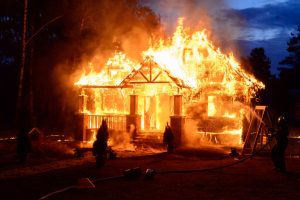Fires can be devastating events that leave homeowners and business owners struggling to rebuild their lives and property. Amidst the chaos and emotional toll, navigating a fire insurance claim can feel overwhelming. However, understanding how to properly approach the claims process can make all the difference in getting the compensation you deserve. This article will guide you through the steps to maximize your fire insurance payout, ensuring a smoother recovery process.
Understanding Your Fire Insurance Policy Coverage
The first step in ensuring a successful fire insurance claim is understanding your policy thoroughly. Fire insurance coverage can vary significantly depending on your insurer and the specifics of your contract. Policies typically cover property damage, personal belongings, and sometimes additional living expenses, but there may be exclusions or conditions attached to these. Review your policy carefully, paying close attention to coverage limits, deductibles, and specific exclusions such as damages caused by negligence or intentional acts. Knowing what is and isn’t covered will help you manage expectations and build a stronger claim.
Documenting the Damage After a Fire Incident
After ensuring everyone’s safety and securing the affected property, it’s critical to document the damage as soon as possible. Take clear, detailed photographs and videos of all affected areas, including structural damage, damaged belongings, and any additional expenses incurred, such as temporary lodging or repairs. Compile a list of damaged or destroyed items with descriptions, estimated values, and purchase receipts if available. The documentation will serve as crucial evidence for your claim and help substantiate the extent of your loss. The more thorough your records, the stronger your case will be.
Filing a Fire Insurance Claim: Step-by-Step Guide
Once you’ve documented the damage, it’s time to file your fire insurance claim. Notify your insurance company immediately to start the process. Most insurers have a specific timeline for reporting claims, so prompt action is essential to avoid any complications. During your initial report, be honest and provide a straightforward account of the incident. Once you’ve submitted your claim, your insurer will provide the necessary forms and instructions. Complete these forms accurately and submit any supporting documentation required, such as photos, itemized lists, and receipts. Be sure to keep copies of everything you send.
Working With the Insurance Adjuster Effectively
Once your claim has been filed, an insurance adjuster will be assigned to assess the damage and determine the payout amount. The adjuster’s role is to represent the insurer’s interests, which means their priority might not align with getting you the maximum payout. To ensure a fair assessment, guide the adjuster through all areas of damage and provide them with your documentation. Highlight areas they might overlook and avoid downplaying the extent of the loss. Maintain clear and professional communication, and don’t hesitate to ask questions to ensure transparency throughout the process.
Negotiating for a Fair Settlement
Insurance companies may not always offer the maximum settlement on initial offers, so be prepared to negotiate. If the insurer’s offer seems too low, you have the right to dispute it. Use your documentation to provide evidence of the actual value of your claim, including repair estimates and itemized costs. Obtain independent contractor estimates whenever possible to counter the adjuster’s figures. Stay firm but professional in your communication, and don’t feel pressured to accept a settlement that doesn’t adequately cover your loss. Persistence and evidence-backed claims are key to negotiating a fair payout.
Seeking Professional Help When Needed
If the claims process becomes too complex or if you’re struggling with low offers, don’t hesitate to seek professional assistance. Public adjusters and claim consultants specialize in helping policyholders maximize their insurance payouts. Public adjusters work on your behalf to assess damage, prepare claims, and negotiate with insurers, ensuring your best interests are represented. Similarly, legal assistance from an attorney experienced in insurance claims can be invaluable if disputes escalate. Though these services may involve additional costs, they often result in higher settlements that outweigh their fees.
Common Reasons for Claim Denial and How to Avoid Them
Insurance claim denials can occur for various reasons, but many are avoidable with the right precautions. Common causes of denials include late reporting, insufficient documentation, lack of coverage for certain damages, or errors in the claims process. Avoid these pitfalls by reading your policy thoroughly, reporting the incident promptly, documenting your losses comprehensively, and ensuring your claim forms are accurate and complete. If a claim is denied, request a detailed explanation from your insurer and review this with a professional to explore your options for an appeal or revised submission.
Understanding the Payout Process and Timeline
Once your claim has been approved, understanding the payout process will help you plan your recovery steps. Insurers typically issue payouts in phases, starting with an initial payment to cover immediate needs and temporary repairs. Full settlements for structural damage and personal belongings may take longer, depending on the complexity of the claim. Stay in communication with your insurer to understand the timeline and ensure there are no delays. Knowing what to expect can help you manage financial planning and prioritize key recovery tasks as funds become available.
Maximize Your Fire Insurance Claim Recovery
Navigating the fire insurance claims process can be challenging, but a proactive and informed approach is crucial to securing the payout you deserve. By understanding your policy, documenting damages accurately, and maintaining clear communication with your insurer, you can strengthen your claim. Remember to seek professional help when needed and stay persistent in advocating for a fair settlement. With the right strategies, you can maximize your recovery and begin rebuilding with confidence.
FAQs
Q1. How long do I have to file a fire insurance claim?
Each insurance company has its specific time frame for filing claims, often 30–60 days from the date of the incident. Check your policy for exact deadlines to avoid complications.
Q2. Can I still file a claim if the fire was caused by negligence?
Most policies exclude coverage for damages resulting from negligence. Carefully review your policy terms and consult a professional if you’re unsure about your coverage.
Q3. What should I do if my insurance adjuster’s estimate is too low?
If the adjuster’s estimate is lower than expected, gather additional evidence such as repair quotes from independent contractors and use it to negotiate for a higher payout.
Q4. Do I need a public adjuster for my claim?
Public adjusters are optional but can be valuable if your claim is complex or if the insurer’s offers are insufficient. They work to represent your interests and help you maximize your settlement.
Q5. How long does it take to receive the payout?
Depending on the complexity of the claim, the approval and payout process may take weeks to several months. Communicate regularly with your insurer for updates on timelines.




